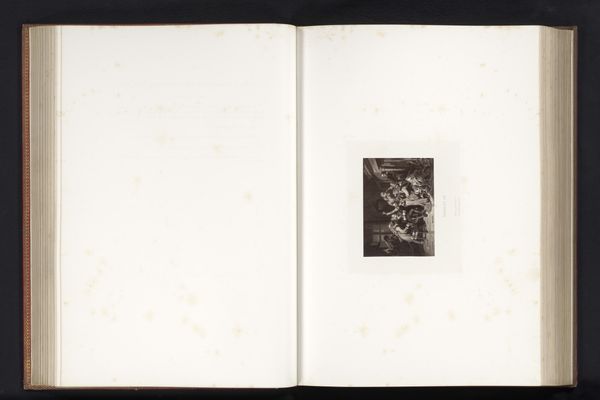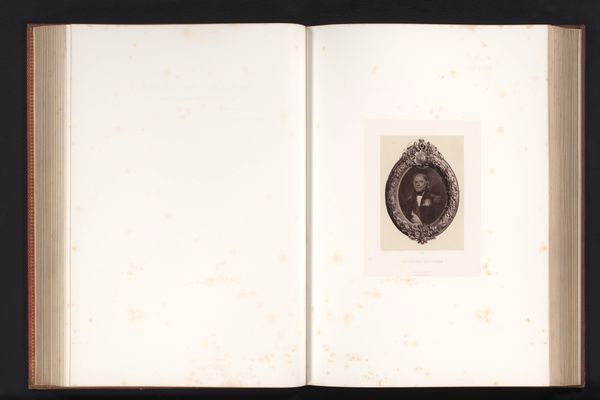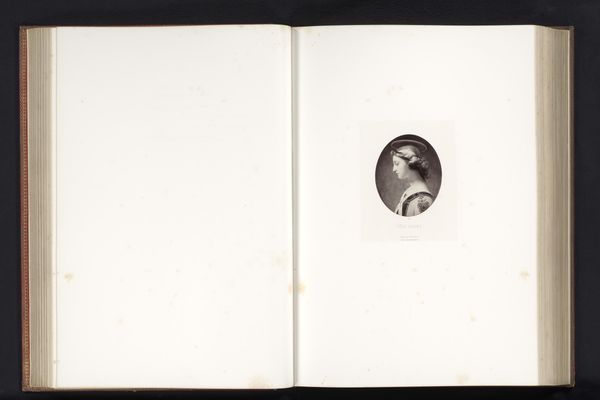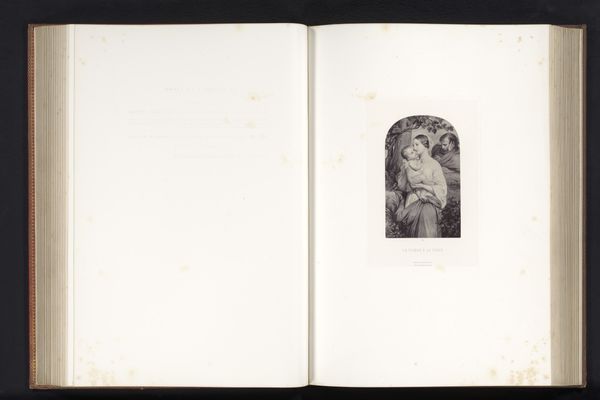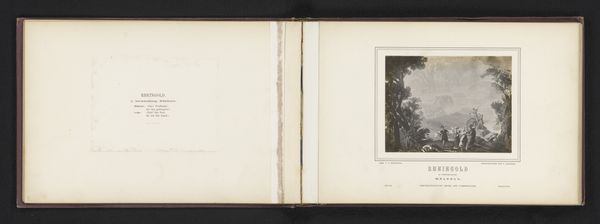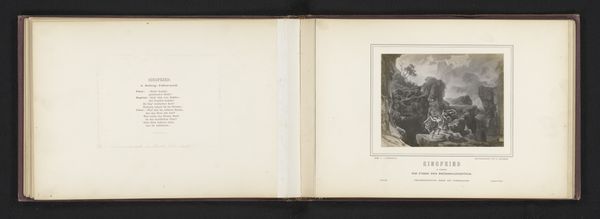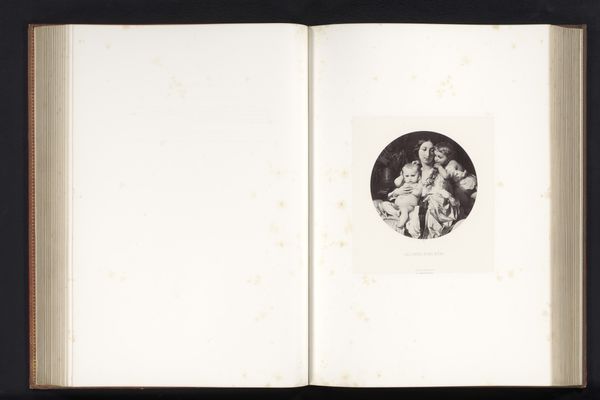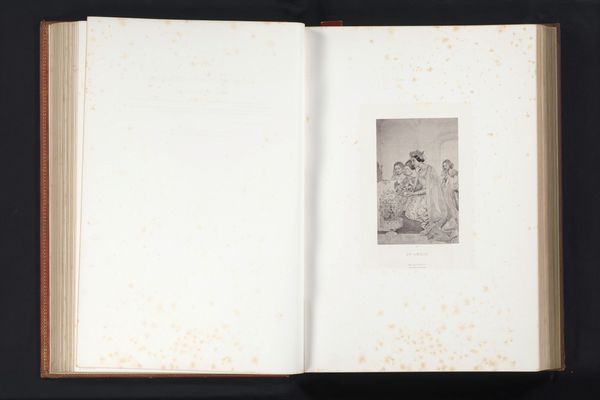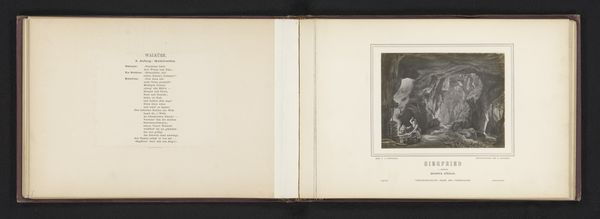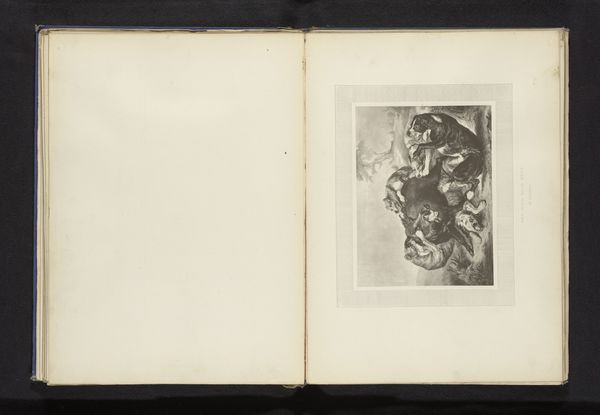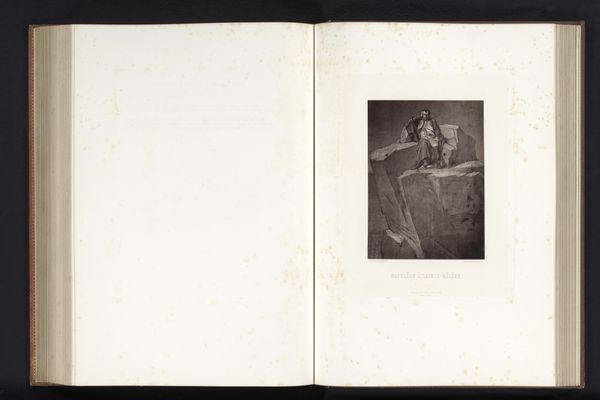
Fotoreproductie van een tekening van het laatste gebed van Maria Stuart door Paul Delaroche before 1858
0:00
0:00
Dimensions: height 128 mm, width 129 mm, height 196 mm, width 183 mm
Copyright: Rijks Museum: Open Domain
Editor: So, here we have a photographic reproduction of a drawing titled "The Last Prayer of Mary Stuart" by Paul Delaroche, sometime before 1858. It’s rendered as a print on paper, part of a larger bound volume. It strikes me as…intimate, almost hidden amidst the vast blank pages. What do you see in how the image's reproduced, almost presented as ephemera? Curator: I'm immediately drawn to the book itself. The physicality of the bound paper, the printing process… these weren’t neutral choices. Consider the labor involved: the papermaking, the drawing itself by Delaroche, then the reproductive printmaking and binding into a volume. Who was meant to consume this, and how did that shape the work? Was it mass-produced for wider distribution, or something more bespoke? Editor: Interesting! I hadn’t thought about the implications of the book format so much. Does that mass-production suggest something about how Delaroche’s work, originally conceived as a drawing, circulated and gained meaning? Curator: Exactly. It makes me consider who was buying these kinds of prints, or even pirated versions of them. Did access to these images empower wider audiences by connecting them to historical narratives? And what was the relationship between "high" art, like Delaroche’s drawing, and the craft of printmaking that brought it to a wider public? Was its materiality valued, or did this process cheapen its social importance as a fine drawing by a recognised master? Editor: That definitely makes me think about the power of reproducible media and how it reshapes our understanding of historical moments and artists. I suppose I had initially focused just on the depiction of Mary Stuart, but you've helped me appreciate the broader context and the work's journey. Curator: Seeing this work now opens the window to those original decisions around artistic creation and commodification. I wonder if we will ever know the real drivers behind this work's selection for inclusion within this particular book?
Comments
No comments
Be the first to comment and join the conversation on the ultimate creative platform.
